Key takeaways:
- Footwork is the essential foundation of breakdancing, influencing both style and performance.
- Mastering footwork boosts confidence and enhances the connection with the audience during performances.
- Common challenges include maintaining balance, memorizing patterns, and synchronizing movements with music.
- Effective learning strategies involve visualization, practicing with feedback, and utilizing online resources and workshops.
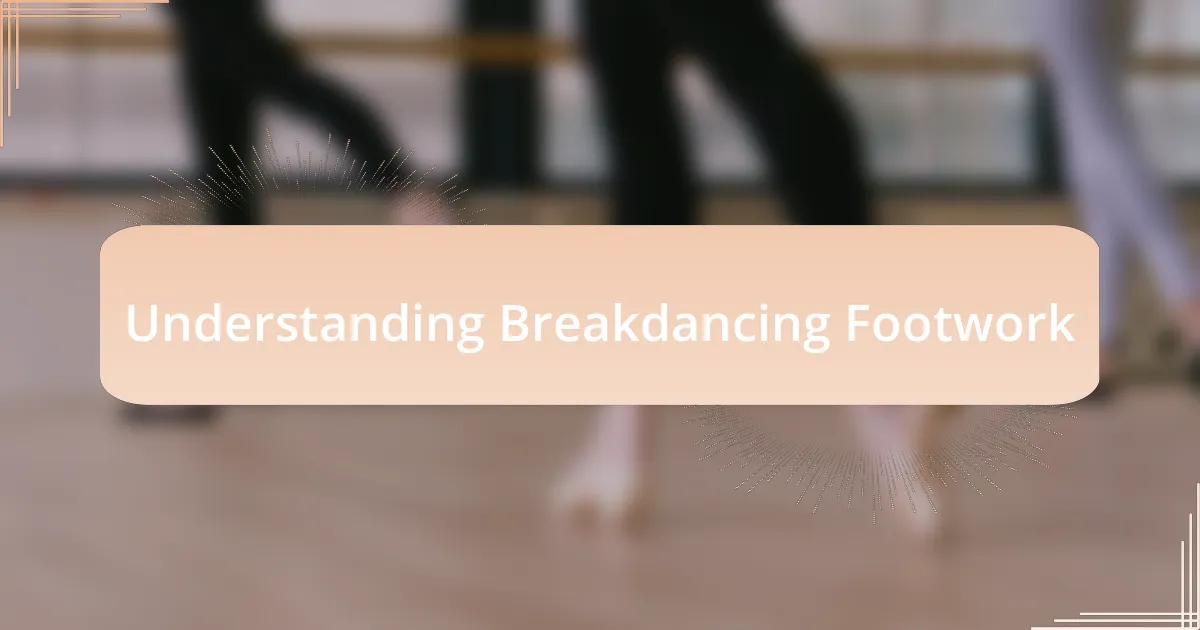
Understanding Breakdancing Footwork
Footwork is the heartbeat of breakdancing; it defines not just your style, but your flow. I remember the first time I attempted to master the six-step. It felt like my feet were in a constant battle with my brain! Every time I thought I had it down, they seemed to have a mind of their own. Isn’t it fascinating how something seemingly simple can feel so complex?
In breakdancing, footwork isn’t just about movement; it’s a form of expression. When I’m on the floor, my feet tell a story that my entire body amplifies. For instance, when I glide into a freeze after a sweeping move, it’s exhilarating. How does footwork make you feel in the heat of a battle? I’d argue that mastering this element connects you deeper to the dance, almost like your individuality shines through every step.
Moreover, understanding footwork means grasping its rhythm and timing. I’ve had moments where I lost track of the beat while trying to incorporate intricate patterns, which led to an awkward fumble. Have you ever been caught in a similar situation? Knowing when to hit those steps seamlessly can create magic on the dance floor. It’s these intricacies that bring life to your performance and set you apart from the crowd.
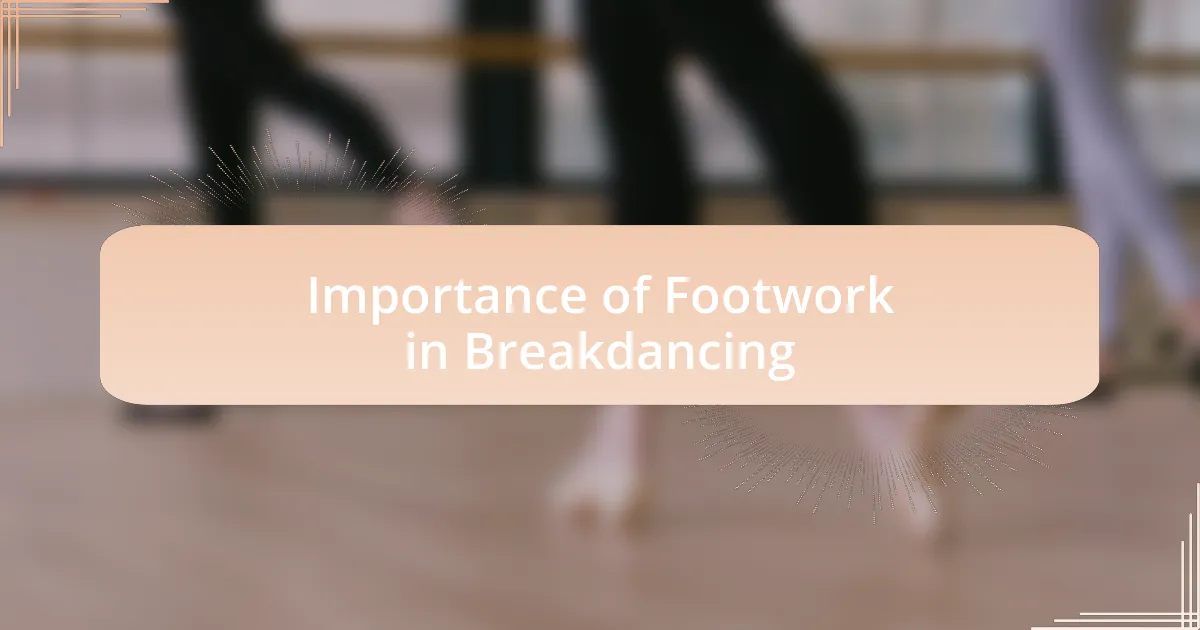
Importance of Footwork in Breakdancing
Footwork is essential in breakdancing because it forms the foundation for your entire dance. I recall the countless hours I spent practicing those basic steps, feeling both the frustration and exhilaration of getting each movement right. It’s amazing how those initial struggles transform into fluid motion, allowing your spirit to shine with every beat.
When you’re on stage or in a cypher, your footwork speaks volumes about your skill level and creativity. One of my most memorable moments was during a competition when I transitioned from a swift weave into a seamless spin. The energy from the crowd surged as my feet glided effortlessly across the floor. Have you ever felt that fleeting connection with the audience through your movements? It’s incredibly rewarding to express yourself in such a visceral way.
Mastering footwork also boosts your overall confidence. I remember performing at an open jam, feeling the jitters before stepping in, but once I hit those steps, everything clicked. The rhythm wrapped around me, and my body moved as if it had always known the way. Understanding this aspect of breakdancing can elevate not just your performance, but also your passion for the art itself.
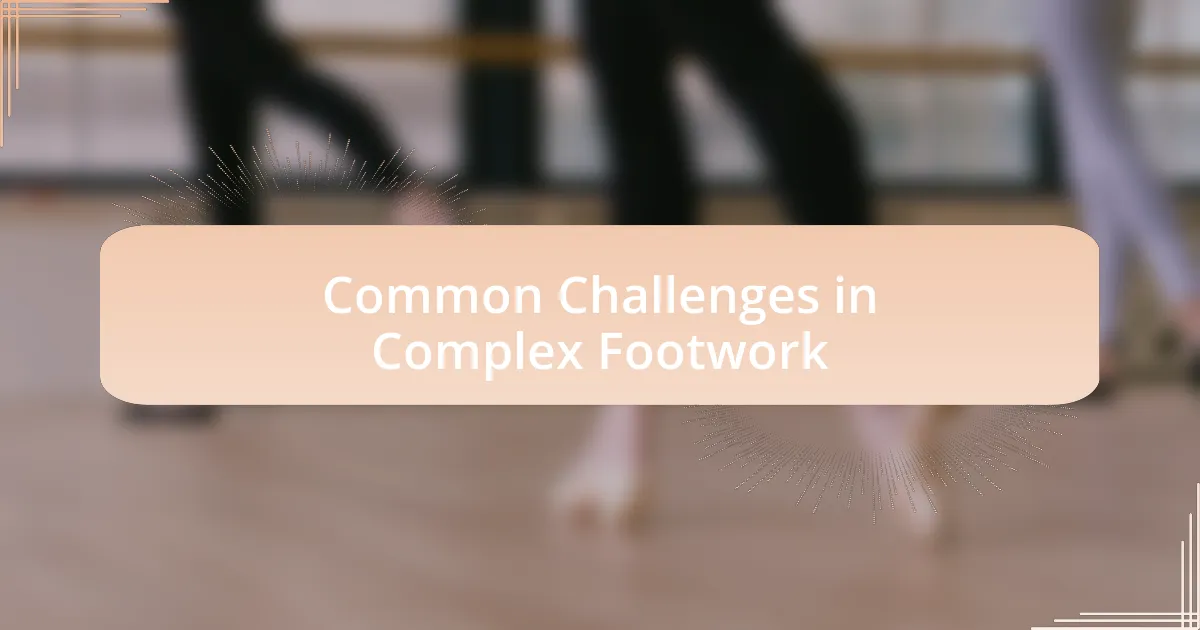
Common Challenges in Complex Footwork
When delving into complex footwork, one common challenge is losing balance during intricate transitions. I can’t count the times I’ve stumbled while trying to execute a challenging sequence. It’s frustrating, isn’t it? Maintaining control while executing multiple movements requires immense practice and body awareness.
Another hurdle is the mental overload from memorizing complicated patterns. I remember the first time I attempted a series of footwork drills that seemed almost impossible. Keeping track of each step felt overwhelming, and I often found myself second-guessing my movements. What can help here is breaking those sequences down into smaller segments. Trust me, focusing on one part at a time makes it more manageable.
Lastly, timing is crucial yet tricky when mastering complex footwork. I’ve often felt out of sync with the music, which can be disheartening while performing. Have you experienced that moment when the beat drops, but your footwork doesn’t quite match? It’s a reminder of how vital it is to feel the rhythm and let it guide your feet. Practicing with varied tempos has helped me a lot, allowing me to adapt my footwork to different styles and beats seamlessly.
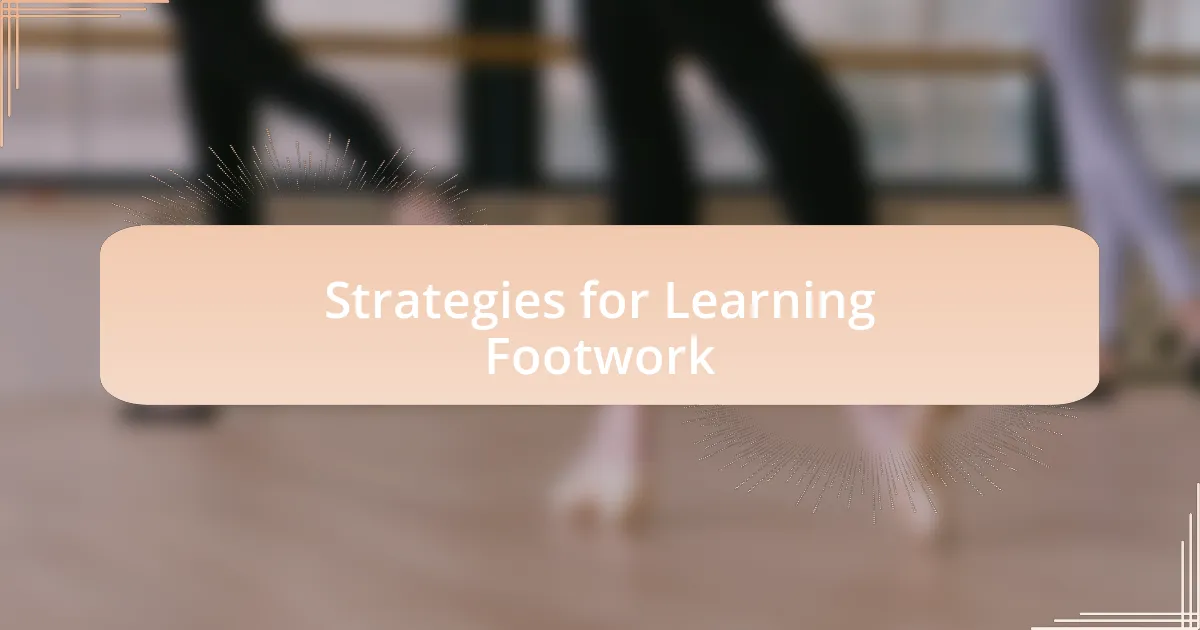
Strategies for Learning Footwork
When approaching the learning of complex footwork, one effective strategy is to visualize each movement before trying it physically. I vividly recall a moment when I stood in front of a mirror, mapping out a challenging sequence in my mind. By mentally rehearsing the steps, I found the physical execution came more naturally, almost like muscle memory kicking in. Have you ever noticed how seeing something first can give you a clearer path to imitating it?
Another approach I recommend is to incorporate floor patterns into your practice. A few years back, I struggled with a specific move until I traced my footwork on the dance floor with tape. This tangible guide helped me understand spatial orientation better. As I practiced, the movement felt less abstract, transforming confusion into clarity. Isn’t it fascinating how a simple technique can shift your perspective?
Finally, consistent practice is essential, but coupling it with feedback from others can accelerate your learning. I remember recording my practice sessions and sharing them with friends to get their insights. Their perspectives helped me identify areas I overlooked and pushed me to refine my moves. Engaging with the community this way not only boosted my skills but also deepened my connection with fellow dancers. Have you considered how sharing your journey with others could enhance your learning experience?
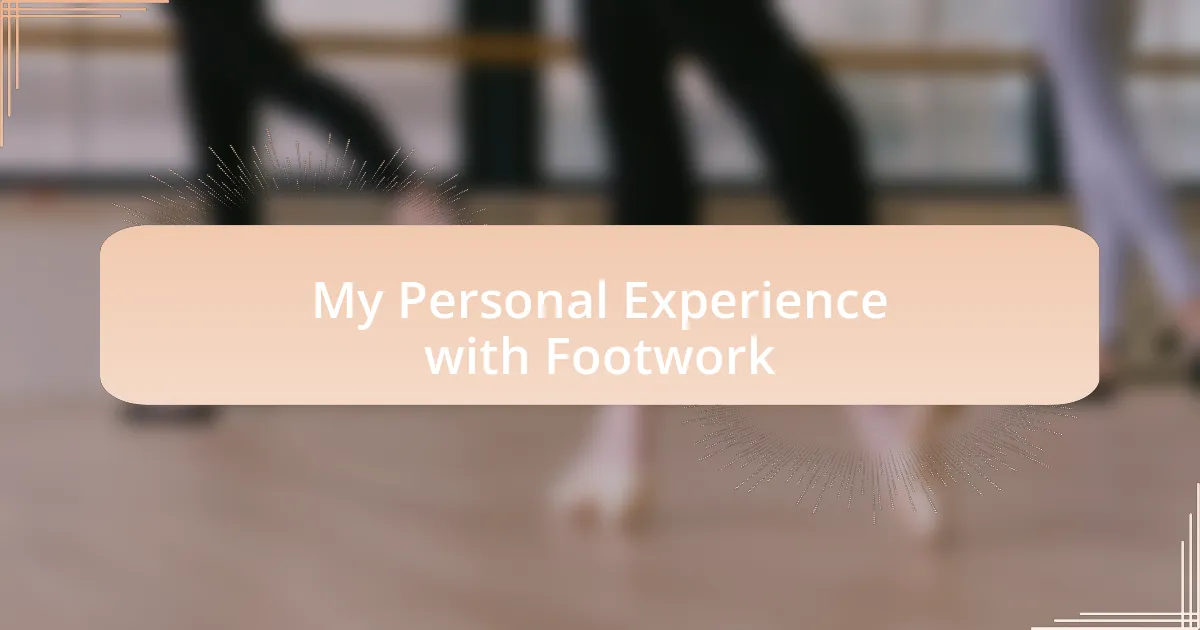
My Personal Experience with Footwork
When I first started dancing, I remember feeling completely overwhelmed by the intricacies of footwork. It was during a jam session that I tried to mimic a dancer’s swift foot patterns, but my feet felt like they were stuck in molasses. Have you ever watched someone effortlessly glide and wondered how they made it look so easy? It took time and patience to realize that footwork isn’t just about moving your feet; it’s about connecting your mind and body in a rhythmic conversation.
There was a time when I hit a plateau with my footwork, feeling frustrated and stuck. I decided to experiment with different music genres to shake things up. This small change brought a refreshing perspective to my style, and I found myself exploring new footwork variations that I hadn’t considered before. It’s amazing how sometimes a simple shift in rhythm can open doors to creativity – have you ever tried dancing to an unfamiliar beat and discovered hidden possibilities?
Looking back, the moments where I felt I was struggling were the ones that taught me the most. During one particularly challenging practice, I felt an unexpected surge of determination and decided to push through the difficulty. I can still recall the electric feeling of finally nailing that footwork combo, and the joy of sharing that moment with my dance crew was unforgettable. Do you remember a time when overcoming a setback became a breakthrough in your journey? That sense of accomplishment reaffirmed my love for breaking and showed me that persistence truly pays off.
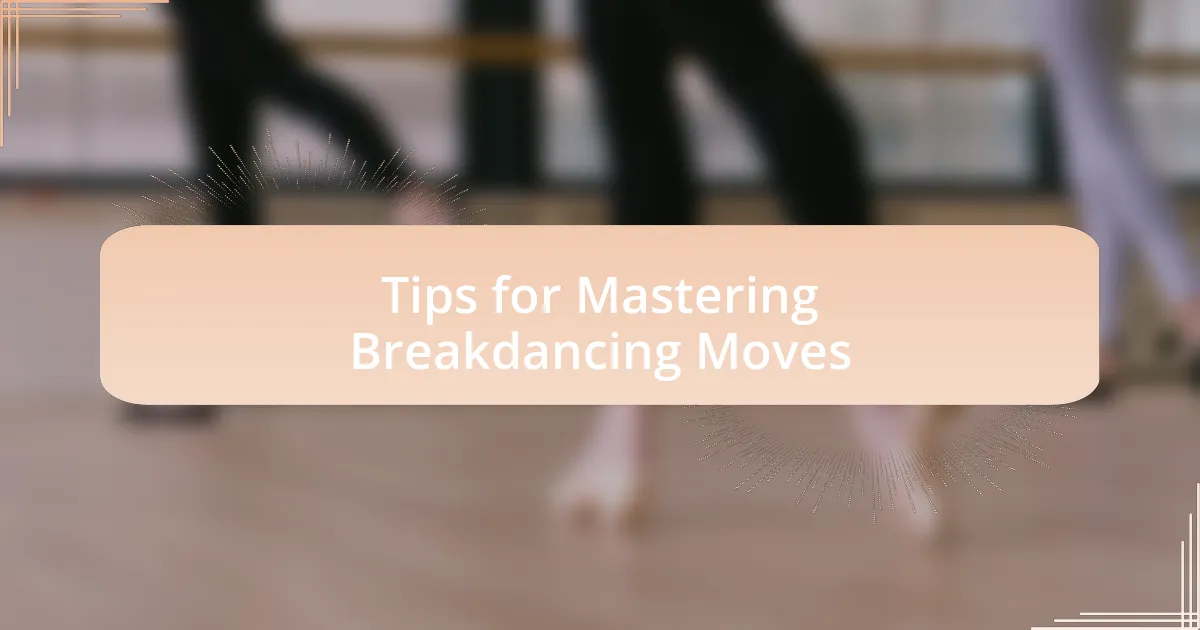
Tips for Mastering Breakdancing Moves
To master breakdancing moves, start by isolating individual footwork elements. I remember when I focused solely on my six-step; breaking it down into its components helped me understand the rhythm and flow better. Have you ever practiced a tricky move slowly, only to find that it clicked when you sped it up? It’s a game-changer.
Another effective strategy is to visualize your movements before you attempt them. During my training, I often closed my eyes and pictured myself executing footwork flawlessly. That mental practice not only boosted my confidence but also made the steps feel more familiar. Try this the next time you’re feeling hesitant – you might be surprised by the clarity it brings.
Finally, don’t underestimate the power of repetition. I spent countless hours drilling specific combinations until they became second nature. There were days when my feet felt like they were rebelling, but pushing through those sessions refined my technique. How do you handle frustration in practice? I’ve learned that every struggle is a stepping stone toward improvement.
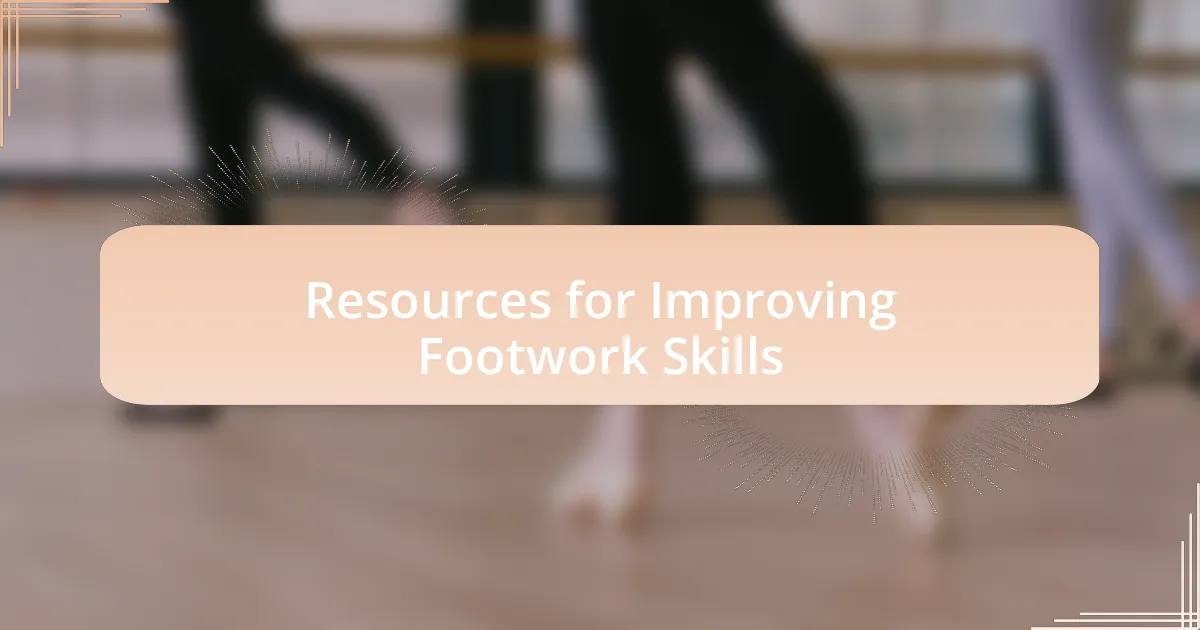
Resources for Improving Footwork Skills
When it comes to enhancing footwork skills, I’ve found that online tutorials can be invaluable. A few years ago, I discovered a series of breakdown videos showcasing different footwork styles. Watching experts showcase their techniques not only inspired me but also gave me tangible steps to implement in my own practice. Have you ever learned a lot just from seeing how someone else moves?
Another resource that has consistently helped me is joining local workshops or clubs. Being in a space with fellow dancers who share the same passion provides not only motivation but also instant feedback on my footwork. I recall a workshop where everyone was encouraged to share tips; it was a transformative experience listening to different perspectives. Have you ever felt that rush of energy from dancing among a supportive community?
Finally, I can’t stress enough the importance of dedicated footwork training programs. I invested in a few online courses specifically designed for footwork, and they really took my skills to the next level. If you’re serious about improving, these structured programs offer guided practice that keeps you accountable. Plus, I always find it rewarding to track my progress; it reminds me of how far I’ve come. Have you ever celebrated a small win in your development? It’s such a motivating feeling!